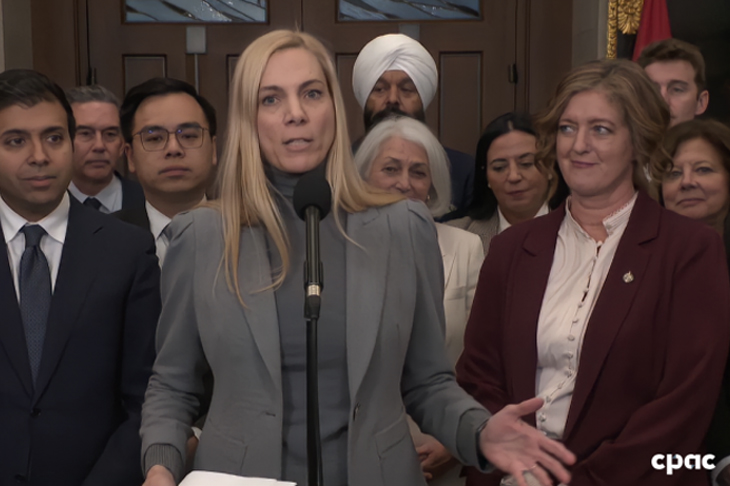CALGARY and TORONTO — Rogers Communications and Shaw Communications announced today they have reached an agreement for Rogers to acquire all of Shaw’s issued and outstanding Class A and Class B shares in a transaction valued at approximately $26 billion.
The deal agreement will see Rogers pay $40.50 per share in cash, amounting to approximately $20 billion. The transaction total includes approximately $6 billion of Shaw debt.
The Shaw Family Living Trust has already agreed to vote in favour of the transaction, which still requires the approval of two thirds of votes cast by Class A and Class B shareholders at a special meeting to be held in May 2021.
Under the terms of the proposed transaction, as the controlling shareholder of Shaw, the Shaw family trust and certain members of the Shaw family will receive 60% of the cash consideration for their shares, which will be exchanged for 23.6 million Class B shares of Rogers. This will make the Shaw family one of the largest shareholders in Rogers.
Getting the Shaw family’s blessing for the transaction from the outset is certainly different for Rogers with this merger announcement after its failed attempt last year to take over Cogeco, a move which was rejected by the controlling shareholder Audet family.
“Our two companies have been successful because of the foresight and vision of two great founders who were driven by their unrelenting pioneering spirit and entrepreneurial values. Without a doubt, my father would be proud of this moment, combining forces with the company founded by his old friend to deliver more Canadians world class connectivity, more choice, and better value,” said Brad Shaw, executive chair and CEO of Shaw, in the two companies’ joint press release. “While unlocking tremendous shareholder value, combining these two great companies also creates a truly national provider with the capacity to invest greater resources expeditiously to build the wireline and wireless networks that all Canadians need for the long term. This transaction will create benefits for generations to come.”
“We are proud to join forces with the Shaw family and team as we combine our companies and our 10,000 team members across Alberta, British Columbia, Manitoba, and Saskatchewan, supported by a head office in Calgary. Western Canada is a major driver of our national economy and together we will have the scale, expertise and commitment to deliver the technology infrastructure needed to keep local communities connected, businesses competitive and attract new investment,” said Joe Natale, president and CEO of Rogers Communications.
The Western head office of the combined company will remain at Shaw Court in downtown Calgary, and the president of Western operations and other senior roles will be based in Calgary, to lead the combined company’s Western Canada operations. Brad Shaw and another director to be nominated by the Shaw family will be named to the Rogers board of directors after the transaction closes.
Subsequent to the transaction’s approval, Rogers says it will invest $2.5 billion to build 5G networks over the next five years across Western Canada, and will commit to establishing a new $1 billion Rogers Rural and Indigenous Connectivity Fund to connect underserved communities to high-speed Internet across the four Western provinces. As part of this fund, Rogers says it will consult with Indigenous communities to create Indigenous-owned and -operated Internet service providers, which would be able to leverage Rogers’ expanded networks and capabilities to create sustainable, local connectivity solutions, says the press release.
In addition, Rogers will extend its Connected for Success program (recently expanded in Ontario, New Brunswick and Newfoundland) across Western Canada, to bring the low-cost broadband program to more seniors and low-income Canadians in communities where the combined company offers Internet services.
For more of the details of the proposed transaction and Rogers’ plans once the deal is completed, please click here.
Reaction was swift from many corners.
“We have been clear that greater affordability, competition, and innovation in the Canadian telecommunications sector are as important to us as a government as they are to Canadians concerned about their cell phone bills,” said Minister of Innovation, Science and Industry Francois Champagne in his statement. “These goals will be front and centre in analyzing the implications of today’s news.
“This transaction will be reviewed by the independent Competition Bureau of Canada, the Canadian Radio-television and Telecommunications Commission (CRTC), as well as the department of Innovation, Science, and Economic Development (ISED) and we won’t presuppose the outcomes of these processes,” added the release.
“Under the Competition Act, the Competition Bureau has a mandate to review mergers to determine whether they are likely to result in a substantial lessening or prevention of competition,” reads the Bureau release. “The Bureau is required by law to conduct its work confidentially. Should the Bureau determine that the proposed transaction is likely to substantially lessen or prevent competition, we will not hesitate to take appropriate action.”
Consumer groups in particular are unhappy with this development.
“Canadians will not benefit from having fewer wireless competitors; they will pay more,” said John Lawford, executive director and general counsel of PIAC, in a statement. “No amount of short-term sugar will help this medicine go down. The real harm to consumers from this deal cannot be wished away by promises to do things these companies should be doing to help the country, anyway,” he added, referring to the incentives for the deal promised by Rogers.
“This deal cannot be approved. Canadians already suffer from sky-high Internet prices. We need more competition in Canada – not less. Over the years, we’ve seen competitor after competitor swallowed up by the Big 3. The result is always the same – more profits for the Big 3, worse plans and less choice for Canadians. We can’t afford this deal. This is going to be a true test of Minister Champagne’s commitment to affordability, connectivity, and Canadians,” said OpenMedia executive director Laura Tribe in a statement.
“Yesterday, I spoke at length to Rogers CEO Joe Natale and Shaw CEO Brad Shaw about the merger,” said Alberta premier Jason Kenney in his own statement. “Rogers has made a number of commitments to increase jobs, service and investment in Alberta. If this proposal is approved, we would hold Rogers to those commitments, as they would be good news for Alberta’s economy.
“The plan outlined by Rogers and Shaw would mean significant net job growth in Alberta, especially in high-paying high-tech jobs. This would further diversify our economy and build on recent major breakthroughs in Alberta’s tech sector.
“The merger also includes a commitment to significant expansion of 5G and high-speed internet coverage across the province, which is good news for Alberta’s rural, remote and Indigenous communities and their local economies,” he continued.
“Rogers has committed to making Calgary the company’s western headquarters and to creating 3,000 net new jobs in the West, about 1,800 of them in Alberta. Most importantly, approximately 500 of those new jobs would be located in Calgary at Rogers’ proposed new National Centre for Technology and Engineering Excellence, which would be a big boost to our goal of making Alberta a hub for digital innovation, particularly in the fast-growing wireless and telecommunications industries.”









